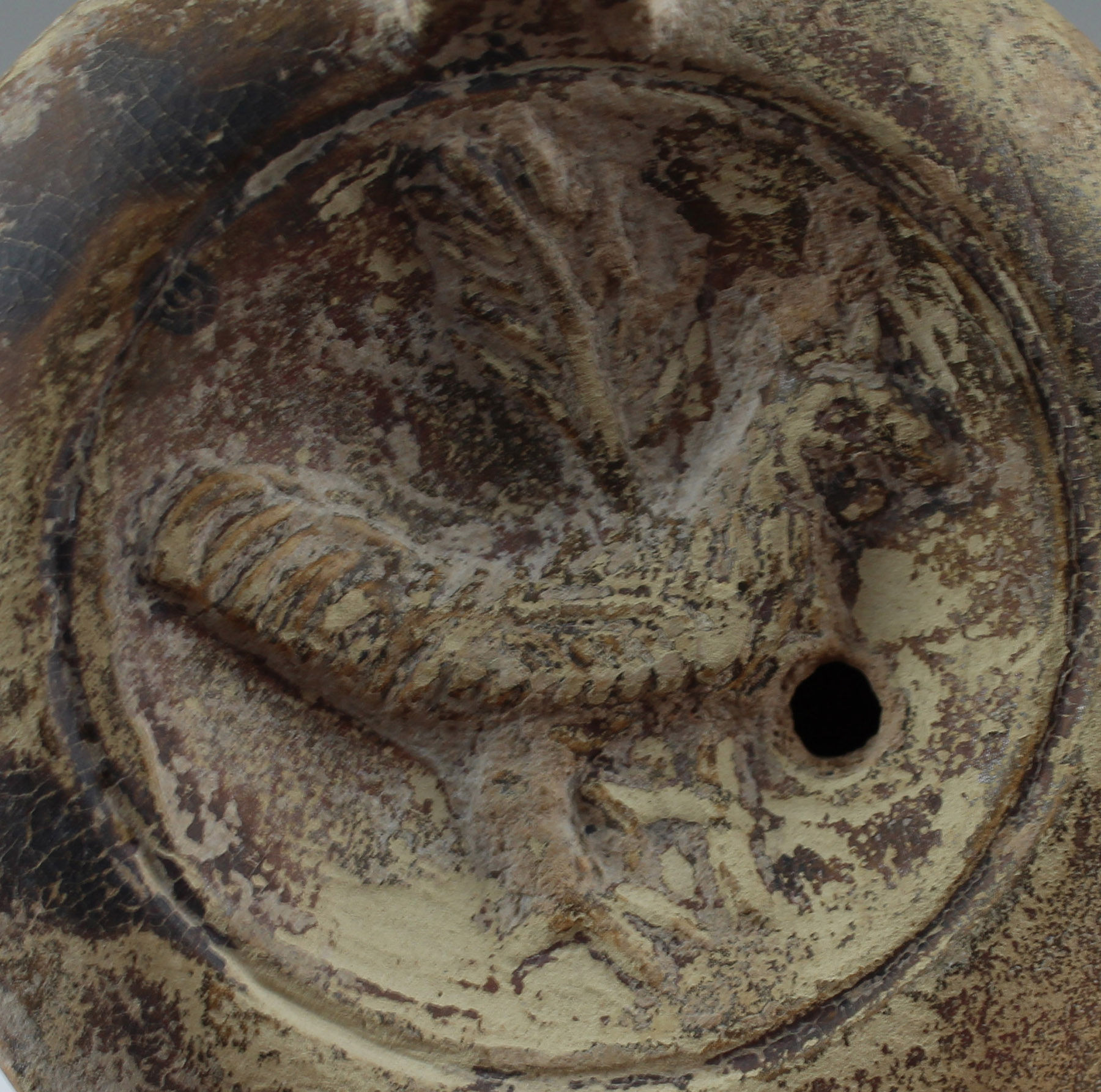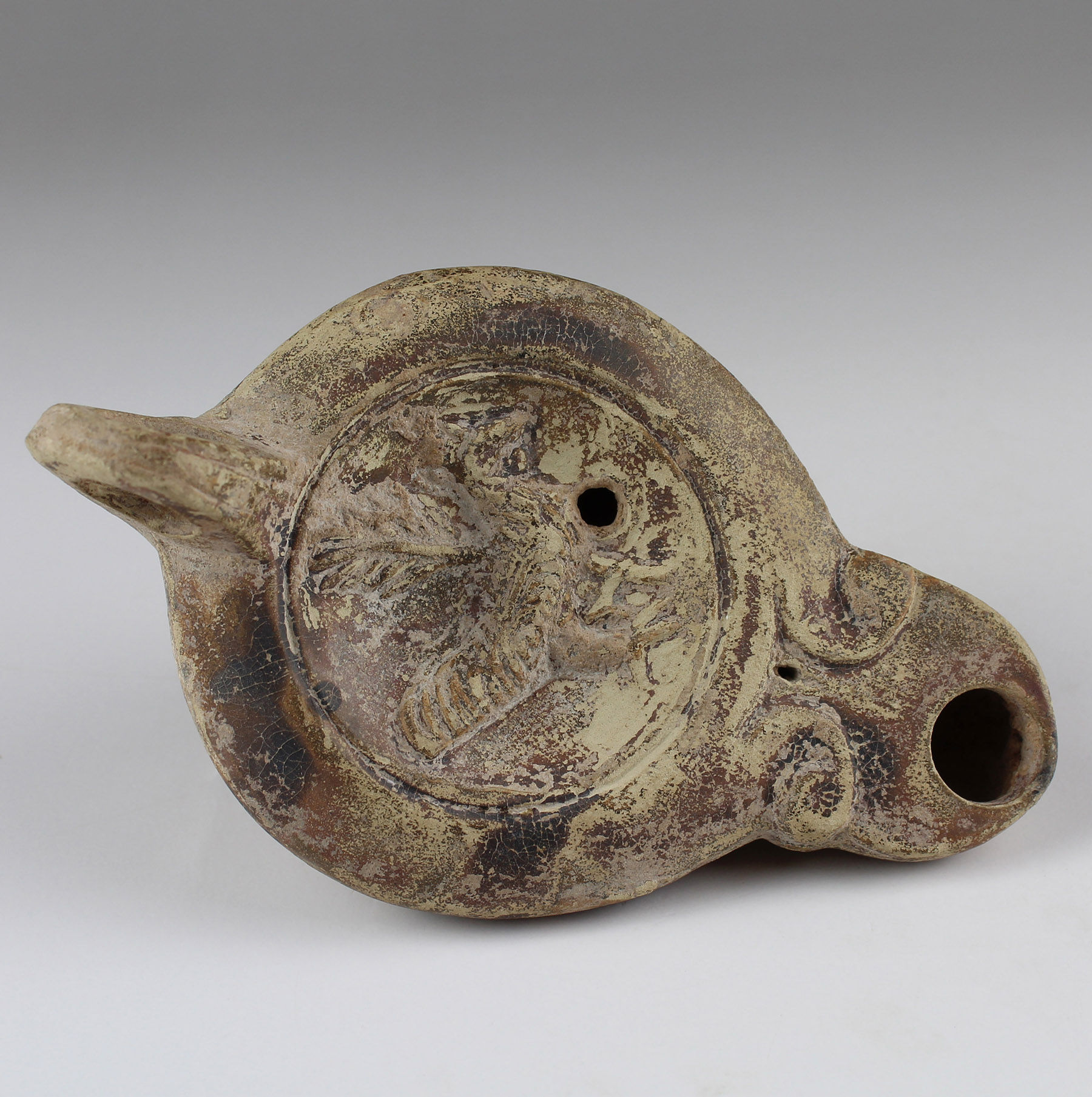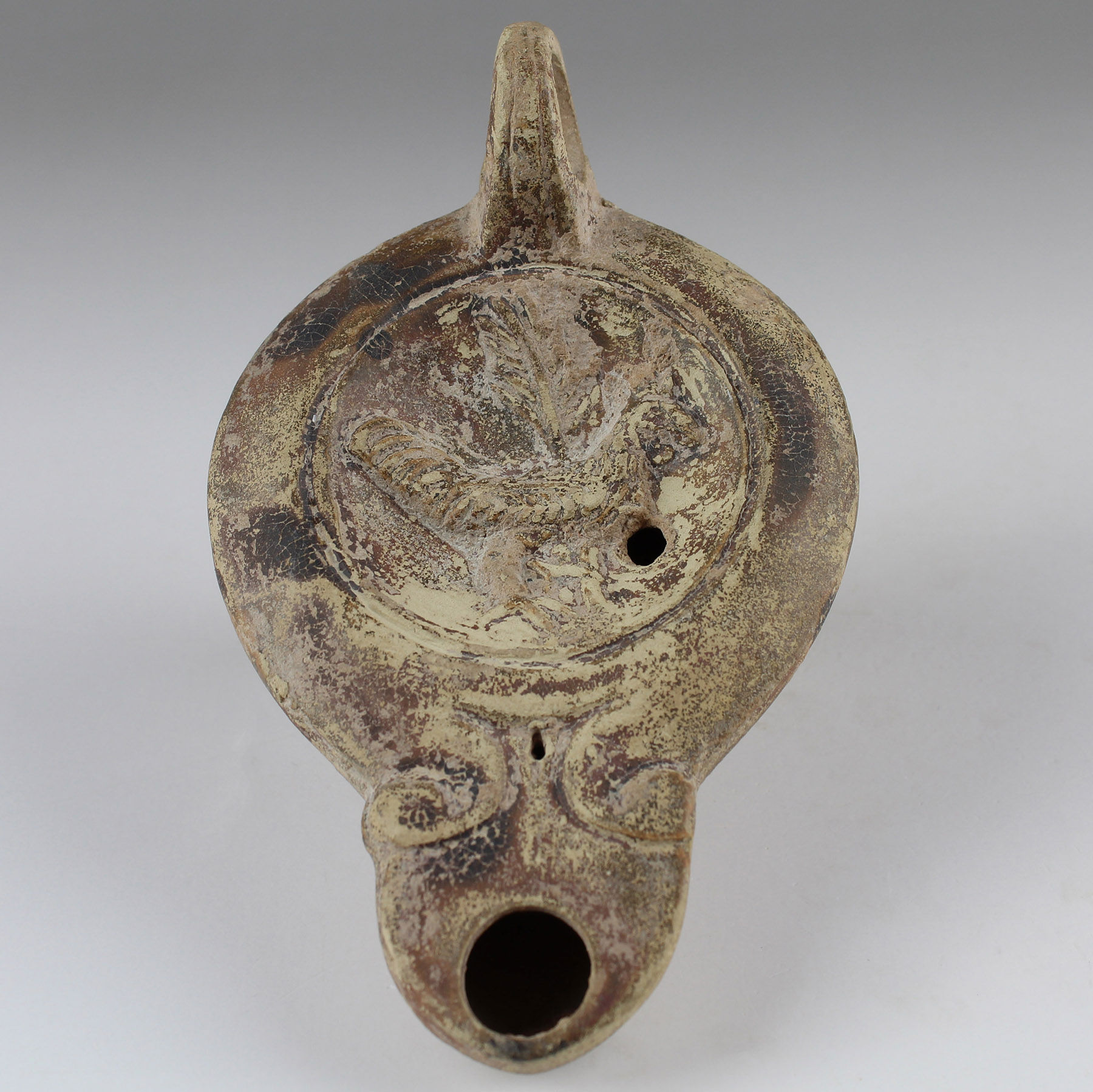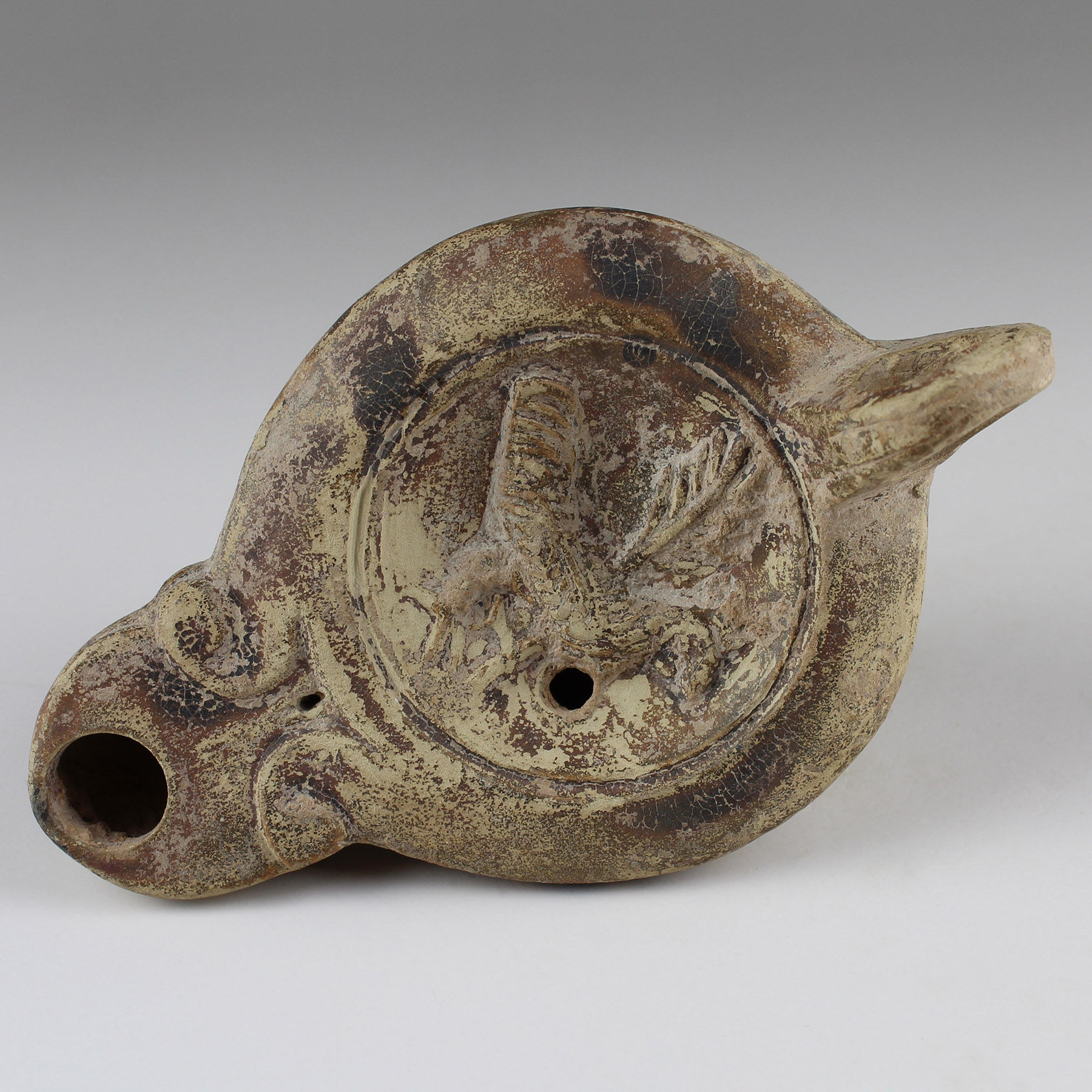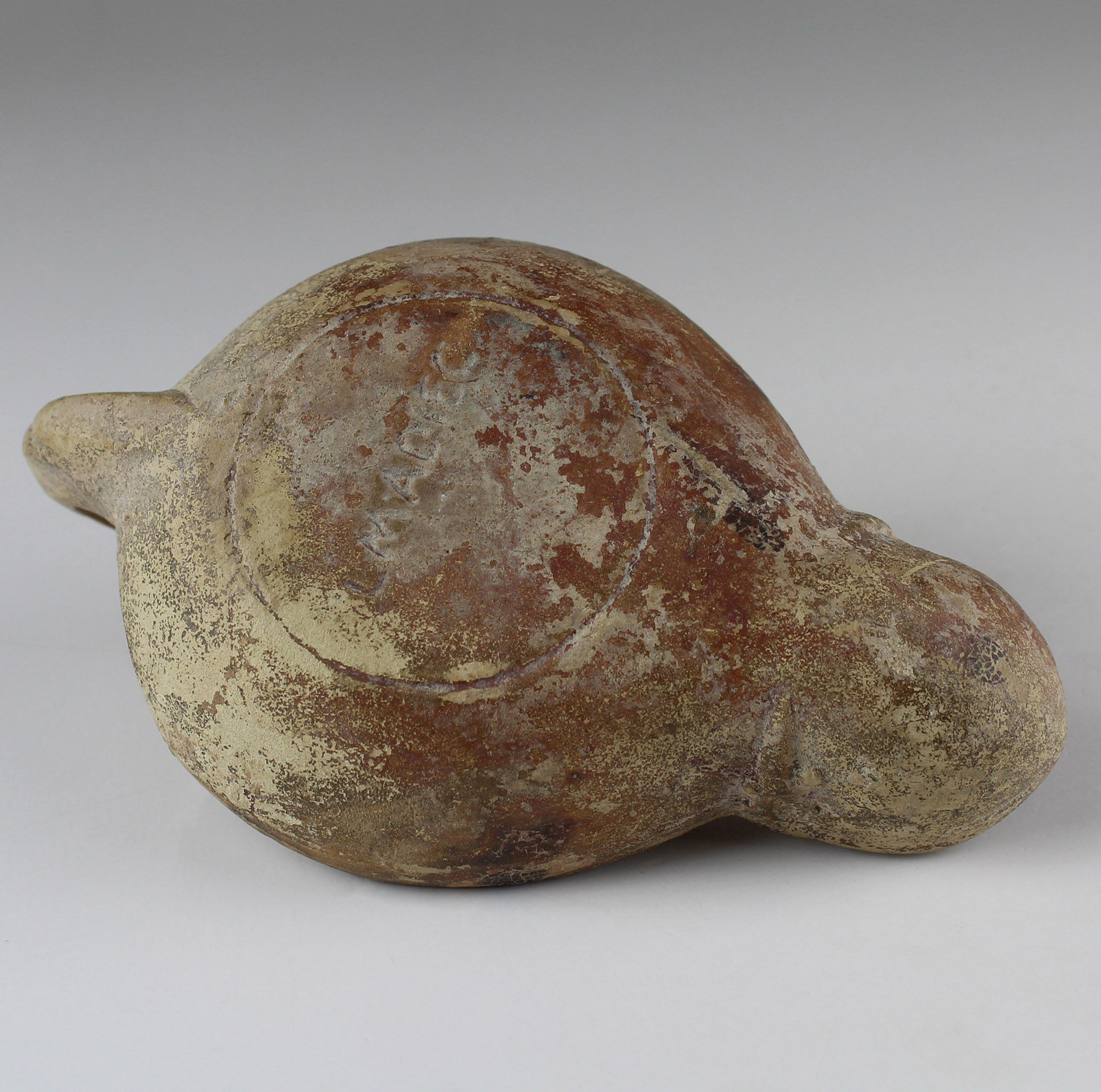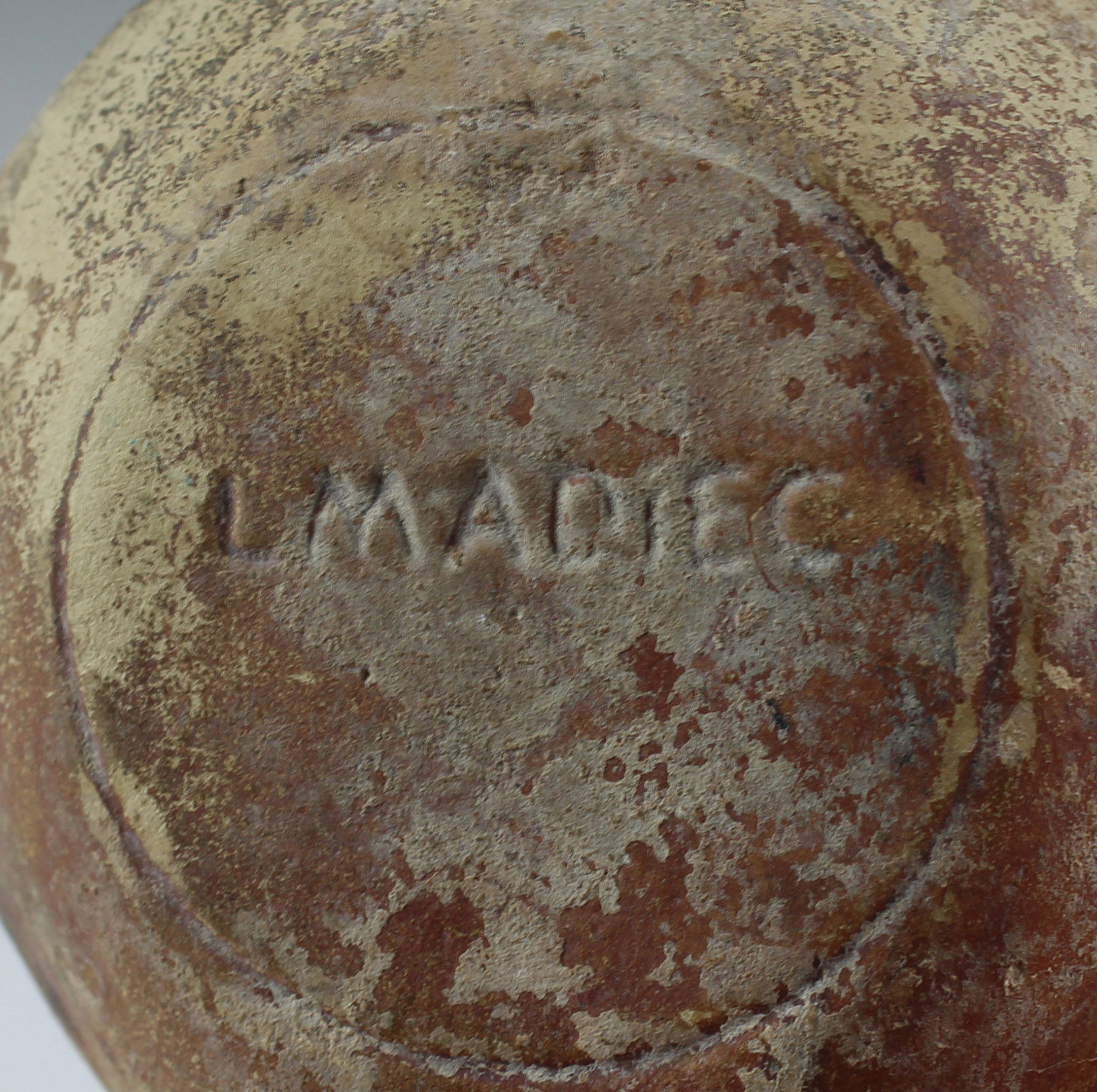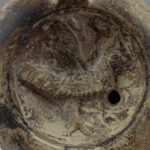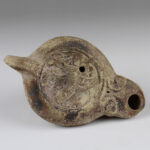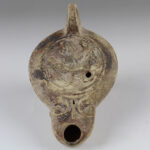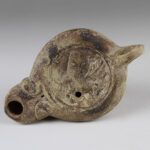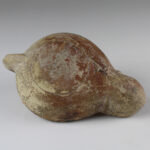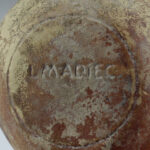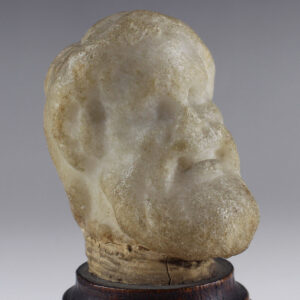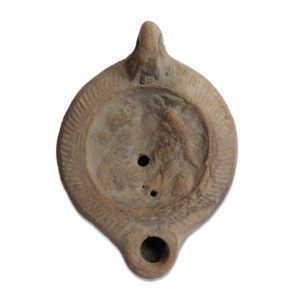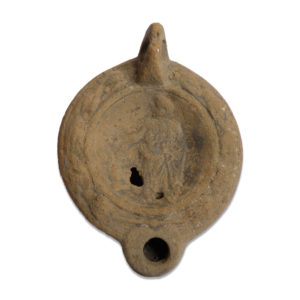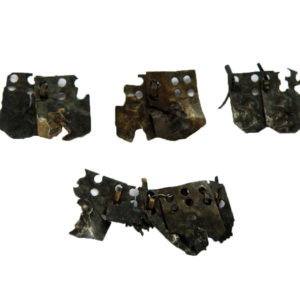Description
| ITEM | Factory oil lamp with cockerel and ‘L.MADIEC’ stamp, for Lucius Munatius Adiectus, Type Bussiere B IV 3 |
| MATERIAL | Terracotta |
| CULTURE | Roman |
| PERIOD | 1st – 2nd Century A.D |
| DIMENSIONS | 46 mm x 75 mm x 125 mm |
| CONDITION | Good condition |
| PROVENANCE | Ex Emeritus collection (USA), collected from the 1950’s to the 1980’s by a distinguished university professor who served as Department head, Dean and Vice President of a major university. |
| PARALLEL | DENEAUVE, J., Lampes de Carthage, Plate LIII, Fig. 519 and Pl. XLI, Fig. 360 (Iconography) |
Since antiquity, the rooster has been, and still is, a sacred animal in some cultures and deeply embedded within various religious belief systems and religious worship. In ancient Babylon the rooster was considered the bird form of the True Shepherd of Anu and was considered the ordained herald of the gods. Nergal, a deity whose name meant “dunghill cock” or fighting cock, was worshipped by the Assyrians, Babylonians, Phoenicians, and Persians. The term “Persian bird” was given to the cock by the Greeks after Persian contact “because of his great importance and his religious use among the Persians.” This stems from the sacred nature of the cock, attested to in the texts of Zoroastrianism, during the legendary Kayanian Period from about 2000 BCE to about 700 BCE.
Perhaps because of their ancient association as a divine messenger, roosters played an important role in both Etruscan and Roman religion. Observing a rooster’s willingness to eat grain kernels as a means to divine the omens for battle, marriage, or some other important action, known as alectryomancy, was frequently practiced. The Etruscans, established an elaborate ritual of alectryomancy using a hen to find answers for life’s most pressing problems. The process involved a circle, which was divided into twenty parts to represent the Etruscan alphabet and each sector was sprinkled with corn. The bird is placed at the middle and the sequence of its pecking was recorded. Roman rituals, building upon the practices of the Etruscans, were conducted with such an extraordinary level of organization that they are considered unparalleled among ancient civilizations. A rare form of alectryomancy practiced by the Romans included divination by a cock-stone, a crystal-colored stone found in a rooster’s crop that was considered to have magical powers.
The cockerel was already of symbolic importance in Gaul at the time of the invasion of Julius Caesar and was associated with the god Lugus, a Celtic deity who the Romans believed to be equivalent to Mercury. Of the six Celtic gods identified by Caesar as those worshipped in Gaul, Caesar thought Lugus was the most revered, describing him as patron of trade and commerce, protector of travelers, and the inventor of all the arts. Lugus’ (Mercury’s) importance is supported by the more than 400 inscriptions referencing him in Roman Gaul and Britain. However, Unlike the Roman Mercury, who is typically a youth, Gaulish Mercury is occasionally also represented as an old man.


